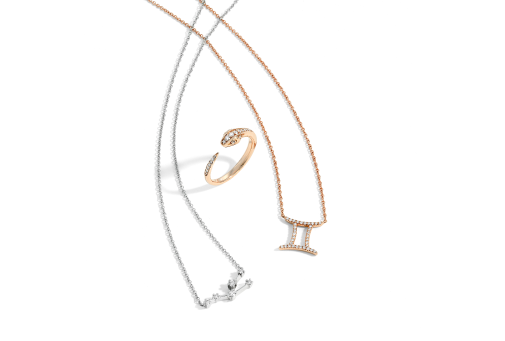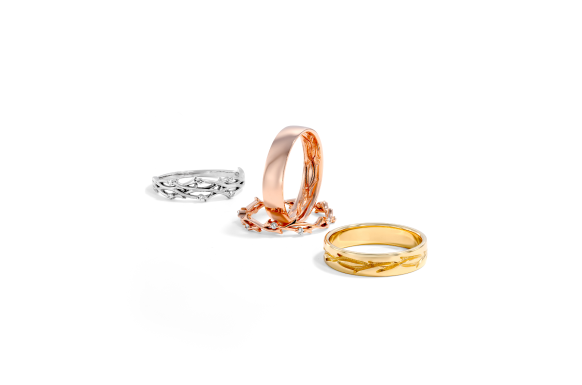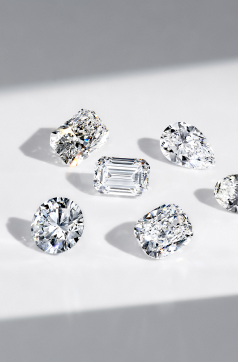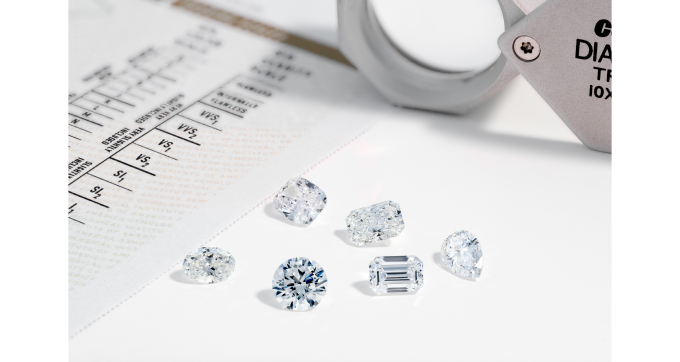Sapphires
Education Center
Education CenterEverything You Need to Know About Sapphires
Sapphires have long been treasures of beauty as well as symbols of nobility, truth, and sincerity. Their alluring blue hues capture the eye and the imagination. However, there's more to sapphires than just their captivating appearance. This educational article highlights everything you need to know about sapphires, from their origins to why they make an excellent choice for jewelry, particularly engagement rings.
What is a Sapphire?
A sapphire is a precious gemstone, a variety of the mineral corundum, composed mainly of aluminum oxide with trace amounts of elements such as iron, titanium, chromium, copper, or magnesium. These trace elements are responsible for giving sapphires their varied colors, though when most people think of sapphires, they imagine a rich, deep blue.
Sapphires can be natural or lab-grown. Natural sapphires are mined from the earth, formed over millions of years under specific conditions. Lab-grown sapphires, on the other hand, are created in controlled environments that replicate the natural formation process. They have the same chemical composition and physical properties as their natural counterparts but are often more affordable and environmentally friendly.
The Advantages of Sapphires
Cost
One of the main benefits of sapphires is their cost relative to other gemstones like diamonds. While the price of sapphires can vary widely based on quality, size, and origin, they generally offer a more affordable option for those seeking a precious gemstone. Lab-grown sapphires present an even more cost-effective choice, making them accessible to a wider audience.
Appearance
Sapphires are renowned for their vibrant colors. Although blue is the most sought-after shade, sapphires come in a rainbow of colors, including pink, yellow, orange, green, and purple. This variety allows for a high degree of personalization in jewelry, catering to individual tastes and preferences.
Durability
Sapphires are among the hardest gemstones, second only to diamonds. On the Mohs scale of mineral hardness, they score a nine, making them an excellent choice for everyday wear. This durability ensures that sapphire jewelry can withstand the rigors of daily life, maintaining its beauty over time.
Sustainability
For those concerned about the environmental and ethical implications of their purchases, sapphires, especially lab-grown ones, offer a sustainable option. These gems are created in controlled environments that mimic the natural conditions under which sapphires form, resulting in stones that are identical in chemical composition and physical properties to those mined from the earth.
Why Buy a Sapphire Engagement Ring?
Sapphires offer a timeless beauty that stands out from more traditional choices, and their durability means that a sapphire ring can be a lasting symbol of love, passed down through generations. Additionally, the color of a sapphire can hold personal significance, making the choice of a sapphire engagement ring all the more meaningful.
One of the most iconic examples of sapphire engagement rings belonged to Princess Diana. Her ring, which has captivated public attention for decades, features a 12-carat oval blue Ceylon sapphire. It's surrounded by 14 smaller diamonds and set in 18-karat white gold. This ring didn't just stand out because of its size or the status of its owner; it marked a departure from the traditional diamond engagement rings commonly seen in royal engagements.
Conclusion
Sapphires are much more than just beautiful stones; they are gems with deep significance, offering durability, sustainability, and affordability. Whether natural or lab-grown, a sapphire can make a statement that aligns with both your values and your aesthetic preferences. Considering a sapphire for an engagement ring, a pendant or any piece of jewelry can be a wise decision that honors tradition while embracing personal expression!



